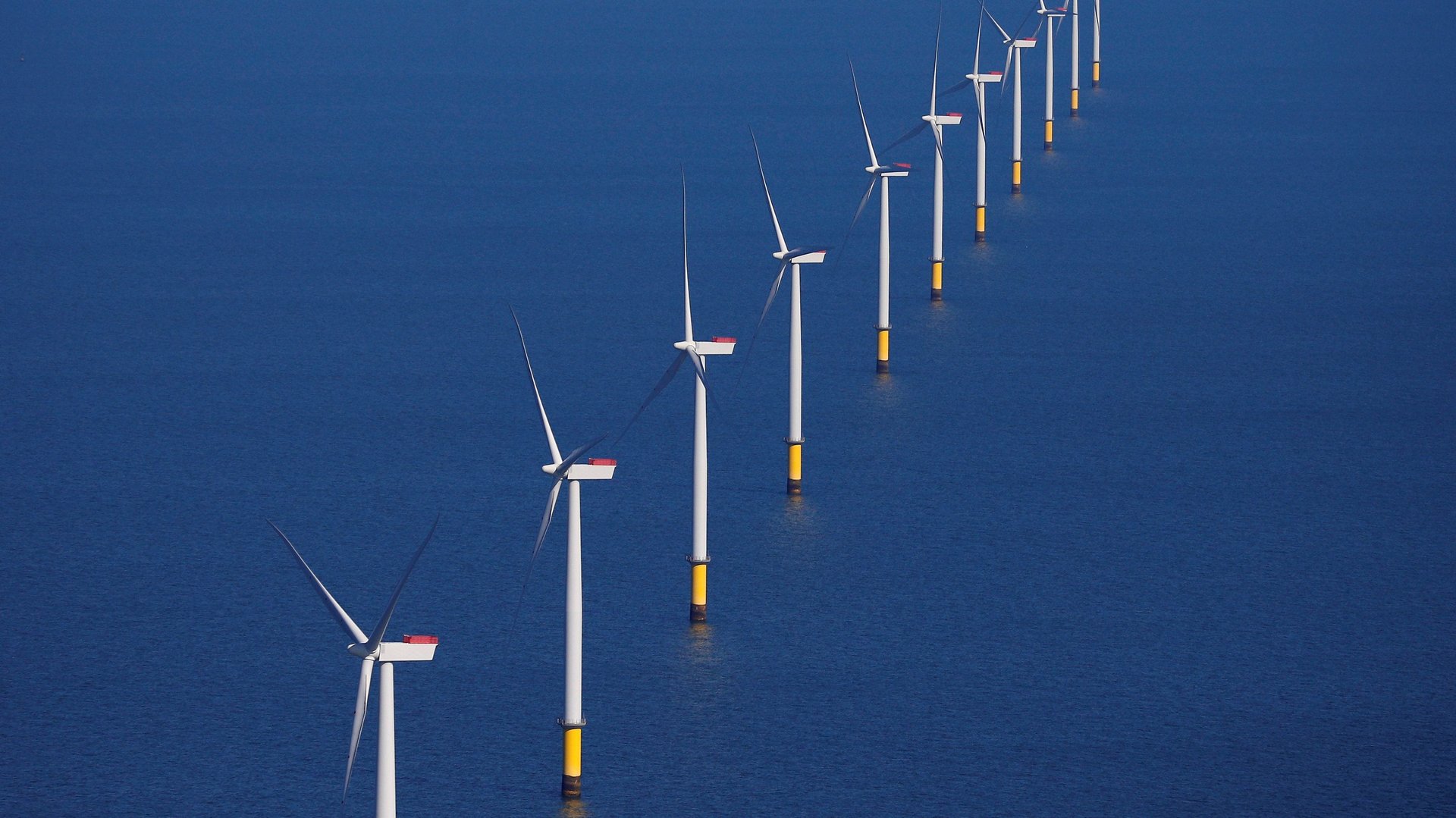Apple is leading the charge to overhaul Taiwan’s renewable energy market
In July, the Taiwan Semiconductor Manufacturing Company inked the largest-ever corporate renewable energy deal, when the microchip producer agreed to a 20-year contract to buy all the power from a new wind farm being built off Taiwan’s coast by the Danish firm Orsted.


In July, the Taiwan Semiconductor Manufacturing Company inked the largest-ever corporate renewable energy deal, when the microchip producer agreed to a 20-year contract to buy all the power from a new wind farm being built off Taiwan’s coast by the Danish firm Orsted.
The deal wasn’t a fluke. It was the outcome of a key change in the Taiwanese energy market that is making it much easier for big industrial facilities to invest in renewables—a change that happened primarily to meet the increasingly ambitious climate goals of US tech companies like Apple and Google.
TSMC is an Apple supplier, one of 71 so far that have committed, at Apple’s urging, to procure all of their energy from renewable sources by 2030. Greening that supply chain is crucial to the consumer electronics giant’s goal, announced in July, to have a net zero carbon footprint by 2030. Only about 1% of the company’s emissions—which in 2019 were about equal to those of Sri Lanka—come from its own stores and offices; almost all the rest are from the factories that produce its products.
If its suppliers succeed, Apple says, the carbon savings will be equal to taking 3 million cars off the road each year. But meeting that goal isn’t a matter of just slapping solar panels on factory rooftops; the facilities consume too much energy. And in Taiwan, where 90% of electricity comes from coal, natural gas, and nuclear, there simply isn’t enough clean energy to meet the new demand from tech companies.
That’s a big problem for an economy that relies heavily on producing microchips and other tech hardware for international markets. Largely due to commitments from Apple and Google (which has also pledged to eliminate emissions in its supply chain), $53.4 billion in Taiwanese corporate revenue comes from facilities that are linked to companies with clean power goals, according to Bloomberg, more than any country except the US and Japan.
“In the case of Apple, pushing renewable energy is challenging because their suppliers are in markets where the local renewable energy capacity isn’t in place,” said Dexter Galvin, global director of corporates and supply chains at the UK-based Carbon Disclosure Project.
In the US and EU, companies solve this problem by tapping into a well-established and quickly growing market for renewable energy certificates (RECs). Sold by renewable energy generators and certified by third-party agencies, RECs put a value on the “greenness” of a megawatt-hour of renewable energy. In places where renewable energy isn’t physically available, a company can buy RECs while continuing to consume fossil fuel-generated energy, and credibly claim its operations are renewable.
But until recently, a market for corporate RECs didn’t exist in Taiwan. And because international regulations only allow companies to take credit for renewable investments in the same country as the facility, Apple couldn’t build a solar farm in North Carolina and say that it was offsetting its factories abroad.
So in 2018, Apple representatives, working with local and international NGOs and Taiwanese officials, pushed through a regulatory change that would allow corporations to purchase RECs for the first time. That, plus the continually falling cost of renewables, created the market conditions necessary for foreign companies to begin to green their supply chain, said Orrin Cook, director of international programs at the Center for Resource Solutions, a San Francisco think tank.
“In Taiwan, without the leading tech companies’ demand for renewable energy, I don’t believe that change would have taken place,” he said. “They’re very much pushing the envelope to allow for more renewables on the grid.”
The first project to bear fruit from that change came early last year, when Google commenced construction on a large solar array suspended over a fish farm, which will use RECs to offset the power from the company’s data centers in Taiwan. Apple followed up in September with solar panels on the roof of a soy sauce factory, using RECs to offset the power from its flagship Taipei storefront.
The TSMC offshore wind deal was the first by a tech supplier in Taiwan. Richard Hsu, an energy consultant in Taiwan who chairs a new coalition called the Taiwan Association for Green Energy Transactions, said the semiconductor company was eager to get ahead of its competition in catering to Apple—especially because in Taiwan, a relatively small island, there are only so many places to build a huge wind or solar farm.
“When they realized that global brands are looking for renewable manufacturing, they wanted to be very cautious by procuring renewable energy at an early stage, and securing as much as possible,” he said. “It can be a weapon in the future: The more they secure, the less other companies can have.”
There’s still more the country needs to do to move the market forward, Hsu said, including training auditors, either in government or in independent agencies, to evaluate and certify REC deals. Developers could also offer smaller REC bundles directly to households or small businesses.
“We have to make sure everyone can participate in the development of renewables,” he said. “Not just some big companies because they need to promote their products in foreign markets. That’s not enough.”